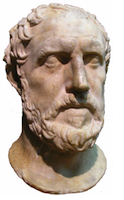Getting started in user experience can be difficult. Our profession has an identity crisis. You need look no further than swarm of acronyms that we hide behind: CHI, HCI, UI, UE, UX, IA, ID, IxD, IxSD… the list goes on.
Our identity crisis means learning our field is like trying to inhabit the mind of a multiple personality disorder sufferer. For an aspiring interaction designer, figuring it all out is daunting. For anyone, it’s daunting.
This is my top-five list of what I’ve found to be most important to do and master if you want to get into design.
1. The Hardest Part Of Software Is Culture. Get A Book On Negotiation.
The hardest part about creating software isn’t software. It’s people. Creating a killer interface is meaningless unless you can convince the rest of your team, client, or company that it is worth the investment. Your job as a user experience person is to cultivate a culture where good design has a leading voice at the table. If you cannot communicate, you will fail. If you can not convince, you will fail. If you cannot listen, you will fail.
Much of what I look for in a designer is the ability to balance, persuade, and negotiate without compromising on design. To design is to inspire participation. Unless we can let our ideas become other people’s ideas—get others to want to champion design as their own—we will not be successful.

The hardest part of your job isn’t being creative or brilliant; it’s communicating and culture.
2. Know Cognitive Psychology.
You are designing for people; you need to be well versed in the abilities and frailties of the human mind. There are fundamental truths about of what we are capable that runs deeper than culture and language. How much can you store in short-term memory? What are the properties of your locus of attention? A priori, how long does it take to choose an item in an ordered list? How does habituation affect design?
If you can’t answer these questions, you need to get yourself a copy of The Humane Interface, How We Decide, and The Resonant Interface.
When I’m hiring, I don’t look for credentials, I look for knowledge. If you don’t at least know what GOMs analysis is and the cognitive science behind why undo is better than a warning, I know that even if your designs are good, you don’t understand why. That’s dangerous. Your gut can often lead you in the right direction, but it can also make stupid and avoidable mistakes. Potentially worse, you won’t be able to communicate and convince others of your ideas because you can only argue with feelings.
Interface design is as much a science as it is an art. Know the science, else you are walking blindly through a minefield of harmful design.
3. Learn to Program, Even If Poorly.

The most powerful tool for creating empathy as a designer is prototyping. It meets the rest of the team half-way, is the second most persuasive artifact (the first being a narrated video of the prototype), and gives you a sense of what’s hard and what’s easy to implement. Having thought through the edge-cases and being able to speak an engineer’s language gives you street cred. You don’t need to be a great coder, but you should at least be able to get your idea across in in HTML and Javascript.
To design is to inspire participation. To do that, you need to be respected. For that, you need to be a designer-coder.
4. Create, Create, Create.
Great designers do design all of the time. They get mad in an elevator when the buttons are in a confusion order, or when the buttons on a ATM are incorrectly labeled. Then they take a picture and blog about it. If you don’t love creating and designing, you shouldn’t be in the field. You’ll need thousands of hours of practice to rise to the top of your game. In the end, you are designing for people so you need to intimately know people, and people are messy.
If you don’t have dozens of little projects you’ve created, learned from, and even discarded, you are doing it wrong.
5. Study Graphic Design.
I used to be a hard-nosed interaction designer, and eschewed visual design in favor of experience design. While it is true that getting interaction right requires a deeper understanding of human psychology, a read through Emotional Design shows that looks matter. Looks affect usability. Looks are just one aspect of designing for emotional beings—you need to think about the whole sensory experience of an object, from sound to touch—but looks are often the most immediatly apparent.
Study typography, study the Swiss grid system, learn how to make your designs pop even if it means being heavily inspired by others’ style in the beginning.
You are in the business of selling ideas. Unfortunately, an ugly mockup of a brilliant idea is often overlooked for a beautiful mockup of a derivative idea. To compete, you need to learn how to be an adequate graphic designer.
This article is syndicated on UX Magazine by permission from its author. It was originally published on Aza’s blog, and we liked it so much we wanted to ensure our readers got a chance to see it.







